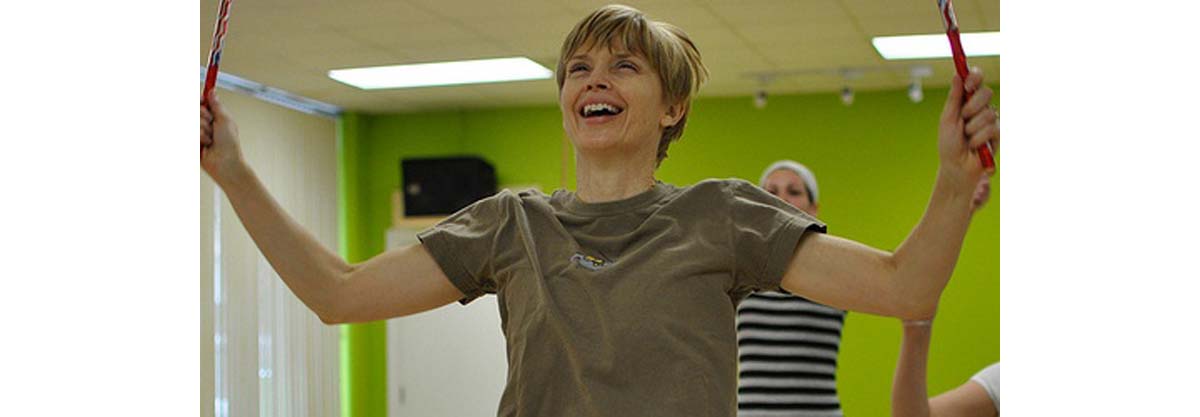Back surgery is a serious event which can leave you immobilized and in pain, or nervous about getting back to physical activity, even if it could be the best thing for you.
Genuine concerns and fears surface when you make your first move after back surgery. It may have been a chronic injury or an accident, but whatever the reason, back surgery is serious, and often leaves patients on high alert for future injury. Nothing is worse than wanting to get back to a physically active lifestyle, but stopping yourself from enjoying out of fear that you may injure yourself again, perhaps necessitating additional surgeries.

Avoiding exercise after back surgery is risky, and it can lead to future problems, pains and discomfort. Aside from how important it is to keep the body moving, exercise will keep the muscles of the back flexible, and increase strength evenly. Avoiding exercise can lead to stiffness and improper movement between the vertebrae, as well as muscle imbalances. The longer the body goes without exercise, the more difficult and time consuming recovery becomes, and the higher the risk of long term complications.
It is important to walk at a speed or incline which is challenging enough to raise your heart rate and sustain it for a few minutes. For many who are coming out of surgery, cardiovascular endurance and capacity may have significantly dropped depending on how long you've been immobilized for. There is no rule which says cardio must be vigorous to have a positive effect. Even a light walk, as long as it makes you sweat and gets the heart going, is going to have lasting effects.
Maintaining good spine health after surgery means taking the correct precautions during the healing process and thereafter. While healing, there is a general rule that health practitioners recommend: no bending, twisting or heaving lifting. If you are a regular exerciser and are going for back surgery, it is certain that you won't be returning to business as usual after the procedure.

To bring it all together once you've been cleared by your physician, find something that you have access to which you can also enjoy. If you are going to participate in any physical activity, it will have to be something which you enjoy so that a lifelong habit can be formed. Physical activity is for life! Next, whatever your activity may be, work it into your schedule 2-4 times per week (or whatever is suggested by your health professional). No matter what comes up in your daily or weekly life, your exercises should never be missed. They should be treated as a priority, just as eating 3 meals a day or getting yourself to work is.
Remember that without your regular cardiovascular activity, your back may suffer in the long term. As long as you don't experience any serious discomfort along the way, its a good sign that your body and spine are responding well to the exercise. Hop on that treadmill or cycle, or wade into that pool and start working up your heart rate, and enjoying your time.

Take the First Safe Step After Back Surgery
The first step is to get cleared by a doctor to engage in physical activities again. It is imperative that your physician give you the green light to start getting active. Most likely, they'll warn you to start slowly and progress comfortably. Since maintaining a physical lifestyle is necessary to maintain good health, reduce stress and better manage body weight, health professionals will, in nearly all instances, recommend some sort of cardiovascular activity, which will not only improve your general health but also help you recover from your injury and surgery. Once you are cleared, its time to prepare yourself to face your fears and get active.Avoiding exercise after back surgery is risky, and it can lead to future problems, pains and discomfort. Aside from how important it is to keep the body moving, exercise will keep the muscles of the back flexible, and increase strength evenly. Avoiding exercise can lead to stiffness and improper movement between the vertebrae, as well as muscle imbalances. The longer the body goes without exercise, the more difficult and time consuming recovery becomes, and the higher the risk of long term complications.
Walking
Walking is perhapos the most basic of human movements; whether or not we're the gym going type, we need to walk every day jus tto get to where we are going, whether that is the rest room or the kitchen, or halfway across town. Walking engages the whole core, which is the trunk of the body, including the muscles which hold the spine upright. After back surgery, these muscles may be weak, so walking is a good way to get your heart rate up while conditioning the muscles to function again as a proper unit. Walking is both a low impact activity and one that can be safely done in a controlled environment. If walking outdoors makes you nervous as a result of traffic or uneven ground, walking on a treadmill will do the trick in building your strength and getting you back into shape.It is important to walk at a speed or incline which is challenging enough to raise your heart rate and sustain it for a few minutes. For many who are coming out of surgery, cardiovascular endurance and capacity may have significantly dropped depending on how long you've been immobilized for. There is no rule which says cardio must be vigorous to have a positive effect. Even a light walk, as long as it makes you sweat and gets the heart going, is going to have lasting effects.
Read more: Knee Problems And Cardio Workouts
The Recumbent Bike
A good way to get the heart going while remaining in a seated position is with the recumbent bike. Rather than sitting in an upright position which puts strain on the lower back, the recumbent bike provides a comfortable seat with back support. Starting out with a light pedaling with no resistance provides a safe and effective workout. These bikes are usually found at a well equipped gym. They are also low to the ground, and don't require any awkward movements to mount; they can be accessed just as easily as car seats.A Simple Workout After Back Surgery
Maintaining good spine health after surgery means taking the correct precautions during the healing process and thereafter. While healing, there is a general rule that health practitioners recommend: no bending, twisting or heaving lifting. If you are a regular exerciser and are going for back surgery, it is certain that you won't be returning to business as usual after the procedure.

Swimming
Swimming is an ultimate cardiovascular activity. Once some of the mobility has returned in the body, going for light swims is the next step. Swimming combines cardiovascular and resistance into a single workout. Starting with both toes touching the floor of a pool and progressing towards laps and treading water can do wonders for the heart the muscles of the whole body. If you can get access to a pool, this is going to be one of your best rehabilitation tools, and should be frequented several times per week.Tai Chi
Tai chi is an ancient Chinese system developed to improve strength, flexibility and to help clear the body and mind. Tai chi works to improve range of motion of the spine, improves muscle control, and the flexibility between vertebrae. Its movements are slow, and low impact, making it safe for anyone, regardless of age, fitness level, or weight. To get started you'll need to work with a tai chi instructor. Beyond that, it can be done at home, or in the comfort of any private space, requiring no equipment or accessories at all.Bringing it All Together
Creating an exercise program for yourself after going through back surgery may seem like an impossible task, there is far more you cannot do than what you can. If you don't use it, you will lose it! Its best to play it safe and brave it on your journey to recovery. Putting together a cardio program to improve your health will also improve your confidence in your abilities, and you'll grow mentally and physically.Read more: Top 9 Cardio Myths
To bring it all together once you've been cleared by your physician, find something that you have access to which you can also enjoy. If you are going to participate in any physical activity, it will have to be something which you enjoy so that a lifelong habit can be formed. Physical activity is for life! Next, whatever your activity may be, work it into your schedule 2-4 times per week (or whatever is suggested by your health professional). No matter what comes up in your daily or weekly life, your exercises should never be missed. They should be treated as a priority, just as eating 3 meals a day or getting yourself to work is.
Remember that without your regular cardiovascular activity, your back may suffer in the long term. As long as you don't experience any serious discomfort along the way, its a good sign that your body and spine are responding well to the exercise. Hop on that treadmill or cycle, or wade into that pool and start working up your heart rate, and enjoying your time.
- “Cardio Exercises after Bback Injury” by Rachel Nelson. Published March 2011, Accessed on February 2011. Retrieved from: http://www.livestrong.com/article/340162-cardio-exercises-after-back-injury/
- “Can I exercise after spine surgery?” by Nicola Hawkinson, RN, DNP. Published January 2008, Accessed on February 2011. Retrieved from: http://www.spineuniverse.com/blogs/hawkinson/can-exercise-after-spine-surgery
- Photo courtesy of wonderlane on Flickr: www.flickr.com/photos/wonderlane/3275117133
- Photo courtesy of 28541412@N04/4301070267 on Flickr: www.flickr.com/photos/28541412@N04/4301070267/

